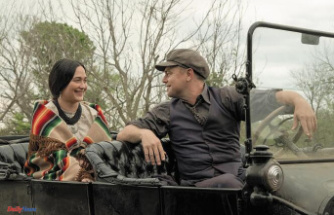Being in nature and seeing animals in the wild - that can be equally exciting and relaxing on animal observation trips. But there are rules that you should know and follow.
The bird song hike starts early in the morning at 5 a.m. Participation is voluntary - but Thomas Griesohn-Pfluger is amazed every time how many join the morning hikes before breakfast. The 67-year-old is co-founder of Birdingtours, a provider specializing in birding tours.
The start looks like this for everyone who is part of the morning excursion: hike for two hours, then breakfast in the hotel and then it's off to the actual target area.
In small groups of around 15 participants, depending on the trip, we go to the coast, to a lake, a pond, to fields, meadows or to the forest. Actually you are in nature and in the fresh air all day long. Always with you: a knowledgeable tour guide.
"When we watch birds, we go outside and look at a beautiful object. It's a relaxation, similar to yoga," says Griesohn-Pflug. Most travelers are not initially concerned with getting rare animals in front of their lenses. Rather, it is about experiencing nature and immersing oneself in observation.
After dinner, for example, we go back to the moor to see the nightjar. This nocturnal bird can be observed at dawn. There are a number of myths surrounding him. "Because he races through the air with his jaws open and catches moths," says the expert.
Bird watching is possible in many places in Germany. In the Wadden Sea, for example, curlews, snipes, sandpipers and terns can be observed. In the Black Forest "there are still capercaillie and rare woodpeckers," says Griesohn-Pfluger. With a bit of luck, lemon canary or mountain pipit will show up.
No matter where you go on tour: the animals should not be disturbed. The rule of thumb for unsparing observations is simple: Always stay on marked paths and never enter closed areas. When crossing meadows, for example, ground breeders would be disturbed and nests destroyed.
Jennifer Krämer from the German Nature Conservation Union (NABU) advises that you should be particularly sensitive during the breeding and settling season. In general, it is better to keep your distance and observe from afar. Therefore, binoculars are part of the equipment.
Wild animals should never be touched or picked up. "Unfortunately, that often happens during the birds' breeding season. Then the young birds flutter out of the nests and look helpless. Many are collected every year," says Krämer. "Most of the time these birds aren't helpless. That's why you should find out beforehand."
This is possible, for example, in the more than 80 NABU nature conservation centers in Germany, but also in nature park and national park centers.
How to find trustworthy providers? According to Krämer, she would read very carefully whether one goes into protected areas and how they are dealt with. "Nature is nature, and wild animals live there," she says. "When in doubt, you don't see them." If a provider promises that, alarm bells should ring.
From their point of view, it is also important how environmental education is provided. "Good providers provide information about the protection and conservation of species and always have an educational character."
This also applies to the observation tours to an animal that does not have the best reputation and is mainly found in eastern Germany. Although there are wolves in all federal states, the territories in Lusatia are particularly well populated.
"Wolves live absolutely territorially in an area of 100 to 250 square kilometers. Within this territory there are an average of five to twelve animals," says Steffen Heiber, wolf officer in the state of Brandenburg and tour guide at Wolfland Tours. "The yearlings migrate, so they can no longer be observed in a certain area," he says, explaining the seemingly small number of wolves per area.
In sandy Brandenburg you can easily find wolf tracks on his tours. This does not mean that the animals are tracked down or even pursued in this way. On the contrary.
"We are concerned with educating and protecting these special animals and conflict-ridden species," says Heiber. The wolf migrations are about learning more about the animals and their behavior. This can be done on day trips or trips lasting several days.
For a multi-day tour, the wolf officer gives a sighting probability of around 50 to 70 percent, depending on the season. To promise a 100% chance would be dubious. Because a sighting can never be guaranteed.
"Of course, humans are only guests in nature and should behave as such," says Heiber. Rules of conduct should be mentioned and implemented in the concept of a tour, is his opinion. Tours with a small number of participants are recommended.












